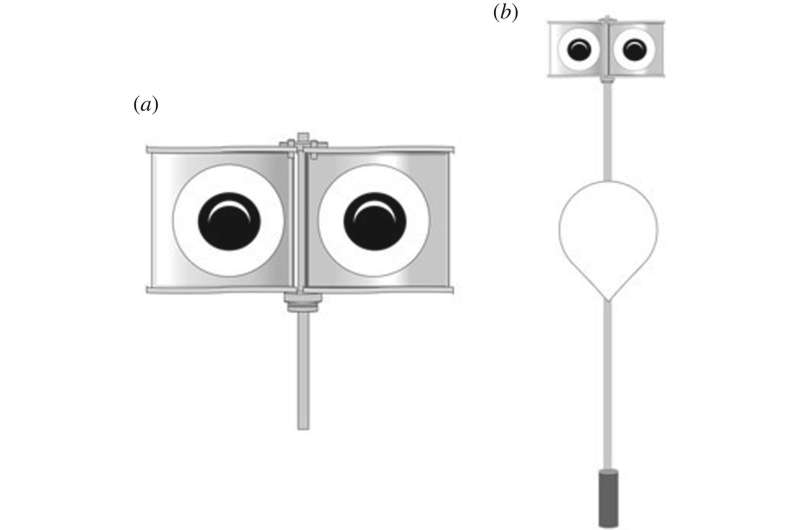May 12, 2021 report
Looming googly-eyed buoys effective at keeping seabirds safe from fish nets

A team of researchers affiliated with several institutions in the U.K. and one in Estonia has created a type of buoy that has proven to be effective at repelling seabirds, thus preventing them from getting caught in gillnets. In their paper published in the journal Royal Society Open Science, the group describes the buoy and how well it worked when tested.
Every year, hundreds of thousands of seabirds drown when they become caught in gillnets—a type of vertical fishing net that is made of a material that makes it nearly invisible underwater. Some estimates suggest that up to a half-million birds are caught in them each year. Over the years, researchers have created devices to deter the birds from trying to catch fish near or in gillnets, but thus far, these have only worked in limited environments. In this new effort, the researchers sought to find a solution that would work for all seabirds.
To find their solution, the researchers first studied seabirds in a general sense, looking to find things that they avoid. They noted that seabirds, like many other creatures, avoid eye contact with other creatures. Taking that information as a cue, the researchers came up with a simple idea—they affixed a small pole to a regular buoy and then attached a pair of googly eyes to the top of it. They made the eyes big enough so that even birds with poor vision, such as geese, would see them. Adding to the effectiveness of the device, waves made the eyes bob back and forth, giving them a looming effect. And the wind made the buoy spin very slowly, making sure that birds from every direction would get a good look at the eyes.
To test their idea, the researchers selected several sites near gillnets and counted how many birds approached and how many attempted to catch fish near the nets. They then set up their googly-eyed buoy and once again counted birds. Over the course of 62 days, they found the number of birds that tried to catch fish near the gillnets dropped by approximately 25% for a distance of up to 50 meters. They also found that the birds were less likely to fish near locations where the buoys had been for up to three weeks after it had been removed.
More information: Yann Rouxel et al. Buoys with looming eyes deter seaducks and could potentially reduce seabird bycatch in gillnets, Royal Society Open Science (2021). DOI: 10.1098/rsos.210225
Journal information: Royal Society Open Science
© 2021 Science X Network




















